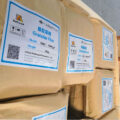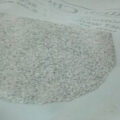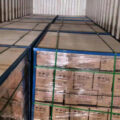The flux removes dissolved and suspended impurities, including oxides, nitrides, carbides, and carbonates of molten metal and alloying elements. Dissolved impurities include dissolved gases and dissolved solids. The molten aluminum in the dissolved gas includes hydrogen, and the dissolved solid particles include alkali metal elements such as sodium and calcium. For example, when chlorine gas is added, it forms an impurity chloride salt, which rises to the surface and is removed. The suspended solids are transported to the surface of the melt by attaching to the rising bubbles. The hydrogen is removed by desorption into the bubbles. Therefore, it is important to maintain a fine dispersion of the flux gas or flux salt so that it is distributed throughout the melt in order to provide many locations for collecting and removing dissolved and suspended impurities.
In order to remove the alkali metal elements (ie, Na, Ca, K, Li), the use of a reactive flux gas containing chlorine is an accepted method for processing molten aluminum. Under equilibrium conditions, the chlorides of each of these elements are produced as reaction products. Except for LiCl, all these halide salts are pure species and are solid at normal processing temperature, so they can be easily separated on the surface of the melt as a supernatant and removed by skimming.
Alkali metal elements are usually present in melt concentrations below 500 ppm. According to the law of mass action (the reaction rate is approximately proportional to the concentration of the reactant), non-equilibrium metastable salts are formed, such as AlCl 3 and MgCl 2 (if Mg is present). These halides are undesirable because they greatly affect the airborne transmission in the process. In addition, MgCl 2 melts at 1306°F and usually melts at normal melt processing temperatures. Since it is difficult to remove the skimmer salt on the surface, the use of salt is highly undesirable. Therefore, it is highly desirable to react or complex alkali elements to produce a higher melting point salt, which is more effectively separated into a solid form by flotation to the surface.
The addition rate of the flux gas can be in the range of 1 to 650 SCF/hour per hour, and usually 1 to 425 SCF per hour or higher, without fuming, which depends to some extent on the aluminum alloy and flux quality. In some modes, the flux gas can be added at a rate of 5 to 250 SCF/hour, while in other modes, it can be added at a rate of 5 to 50 SCF/hour, usually 10 to 25 SCF/hour. The degree depends on the amount of flux gas and flux metal.




